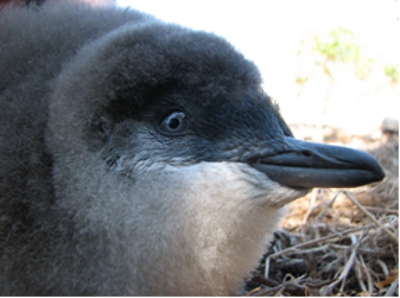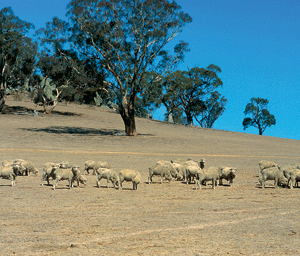
|
Published: 7 November 2011
Increasing the resilience of seabirds in a changing climate
Around the globe, growing evidence suggests that a warming climate is affecting marine ecosystems and species. This raises the question of what can be done to help seabirds and other species adapt to a changed environment.

|
|
A newly hatched Little Penguin chick: warmer ocean temperatures may increase their first-year survival rate.
Credit:
L E Chambers
|
A recent review of observed and predicted effects of climate on Australian seabirds suggests responses to climate-related changes will be species and region-specific. This reduces our capacity to respond through implementing broad national conservation strategies, and increases the need for locally targeted management responses. 1
Despite gaps in our knowledge of seabird species’ biology, we can make efforts to improve the resilience of these animals to climate change through appropriate management of the marine and terrestrial environments. This includes mitigation of threats not directly related to climate change.
Case study: Little penguins on Phillip Island
The colony of little penguins (Eudyptula minor) at Phillip Island, Victoria, is one of the biggest in the world, attracting almost 500 000 visitors a year. Its success offers a good example of how effort put into reducing both climate and non-climate-related environmental threats can increase the species’ resilience to climate warming.
Scientists have intensively monitored the little penguin population since the late 1960s. By investigating the penguins’ responses to environmental change, researchers have identified some clear patterns. For example, in years when sea-surface temperatures are high in the months before the breeding season, the birds tend to start breeding earlier, which leads to more and heavier chicks. 1 , 2 Warmer ocean temperatures have also been associated with increased survival of first-year penguins. Combined, these factors have the potential to increase penguin numbers in the colony.

|
|
Breeding starts earlier in response to warmer sea-surface temperatures, leading to more and heavier chicks.
Credit:
L E Chambers
|
However, warmer conditions are not all good news for this species. While nesting, and in the subsequent moult period, little penguins spend considerable amounts of time on land in burrows and can be exposed to high land temperatures.
Although their burrows provide some insulation, little penguins, as with many seabirds, suffer from heat stress and even mortality with prolonged exposure to air temperatures above 35ºC. The Phillip Island Nature Parks management has been actively addressing this issue by providing shady indigenous vegetation and appropriately designed and insulated artificial nesting burrows.
Warmer and drier conditions can also increase the risk of fire. The little penguin appears maladapted to fire; instead of avoiding it, the birds will remain in their burrows or near vegetation until severely burnt or killed. 3 Projected increases in the incidence and intensity of fire for south-eastern Australia could therefore increase the risk of injury and death for this species.
To reduce the risk of fire in the penguin colony, reserve staff implemented three precautions. First, because overhead powerlines had caused a number of previous fires, all powerlines have now been run underground, effectively eliminating that ignition source. Second, some of the indigenous plants being reinstated in cleared and eroding areas provide shade during summer and also act as fire retardants. Finally, the reserve has implemented a fast-response fire action plan to reduce the risk of fire spreading through the colony.
For the little penguins of Phillip Island, the manageable risks leading to adult and chick mortality on land have been eliminated – at least for the moment.
Lynda Chambers is a senior researcher at the Bureau of Meteorology, specialising in the responses of Australia’s biodiversity to climate variability and change. Her work involves building networks of researchers and conservation managers to improve our understanding of environmental impacts and to develop adaptation options. Peter Dann is research manager at the Phillip Island Nature Parks, which manages the famous ‘Penguin Parade’. His work focuses on marine birds and mammals in Bass Strait and the processes – particularly those identified as threats – that drive their population sizes.
1 Chambers LE, Devne C, Congdon BC, Dunlop N, Woehler EJ and Dann P (2011) Observed and predicted impacts of climate on Australian seabirds. Emu 111: 235–251.
2 Cullen JM, Chambers LE, Coutin PC and Dann P (2009) Predicting the onset and success of breeding of Little Penguins, Eudyptula minor, on Phillip Island from ocean temperatures off south east Australia. Marine Ecology Progress Series 378: 269–278.
3 Chambers LE, Renwick L and Dann P (2010) Victoria’s little penguins show limits to adaptation. ECOS 153:19



